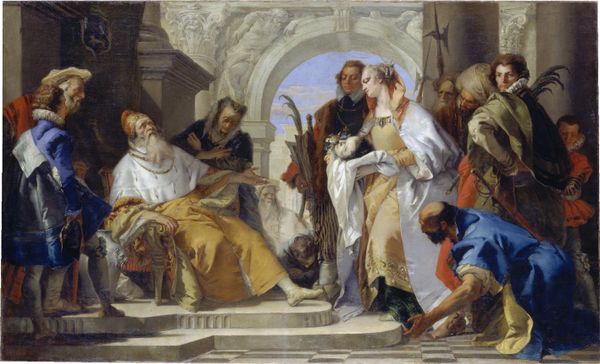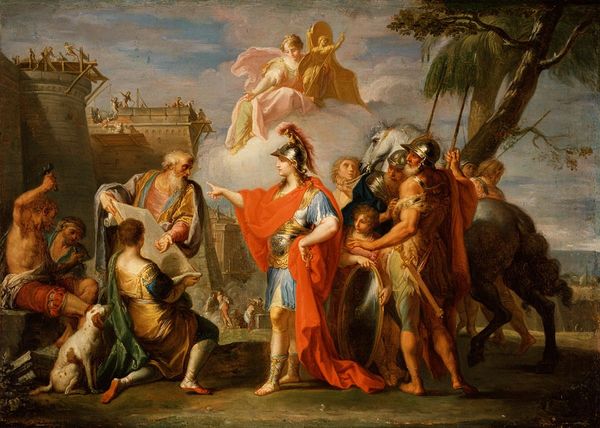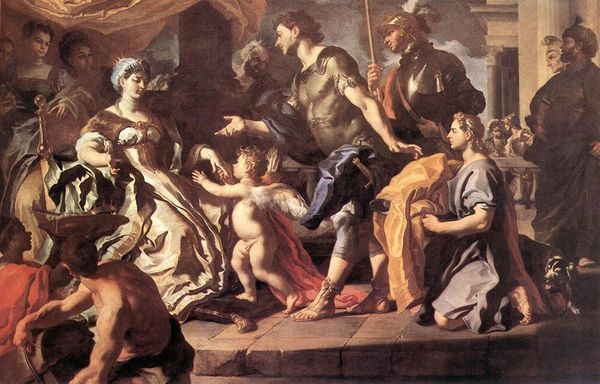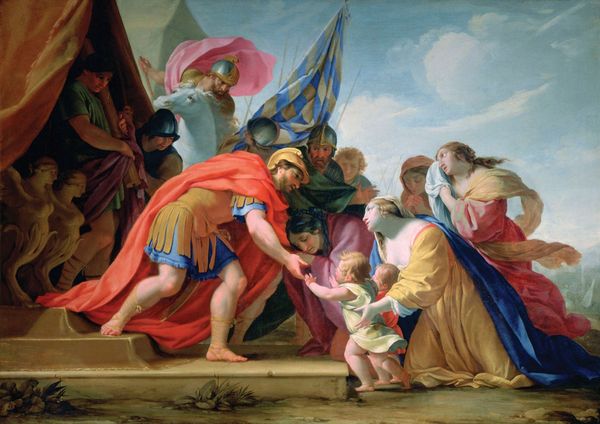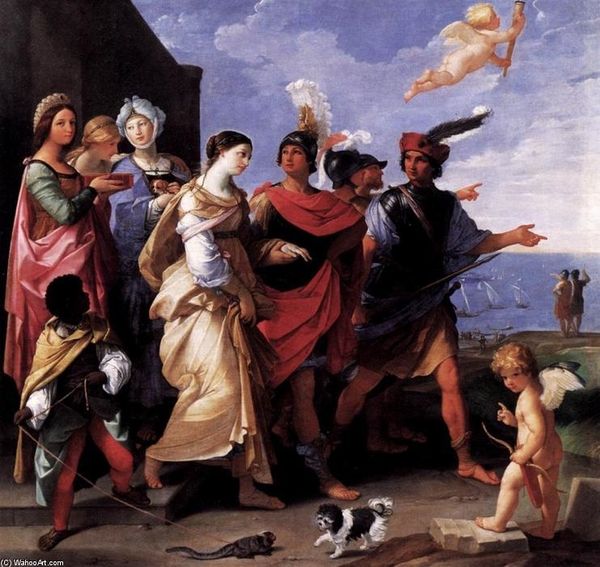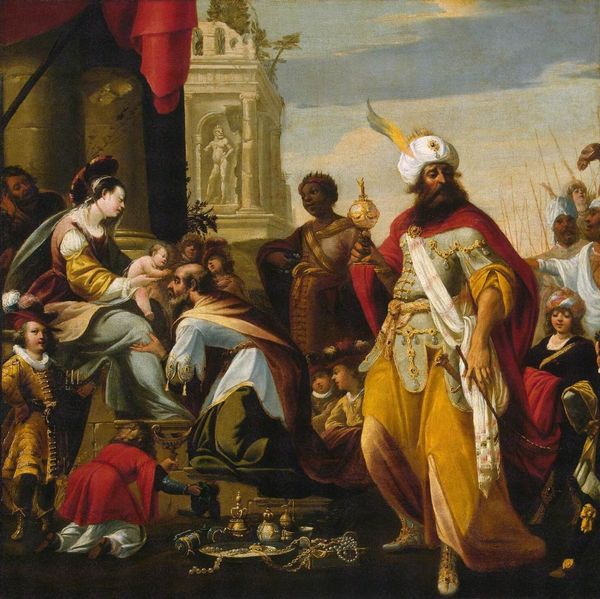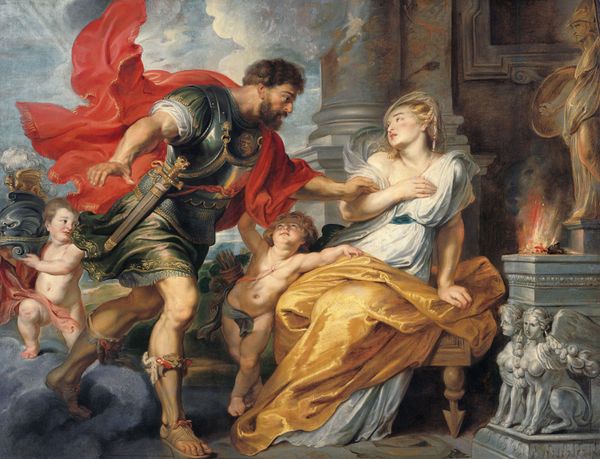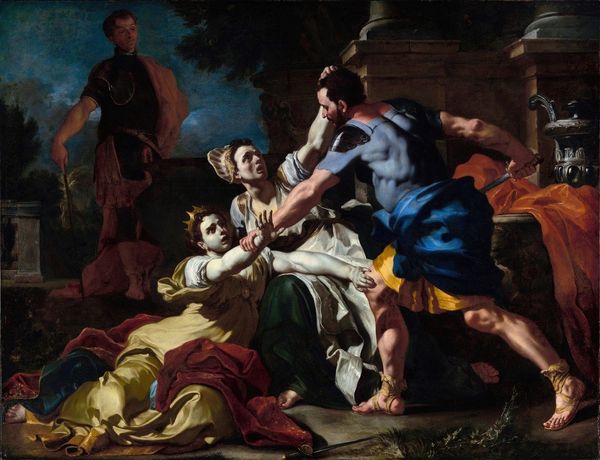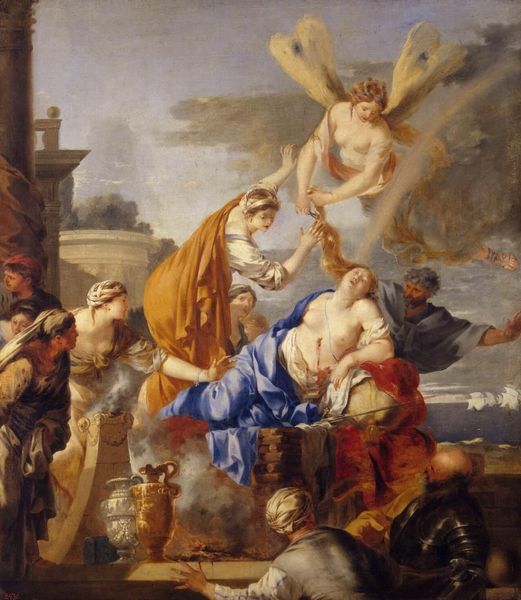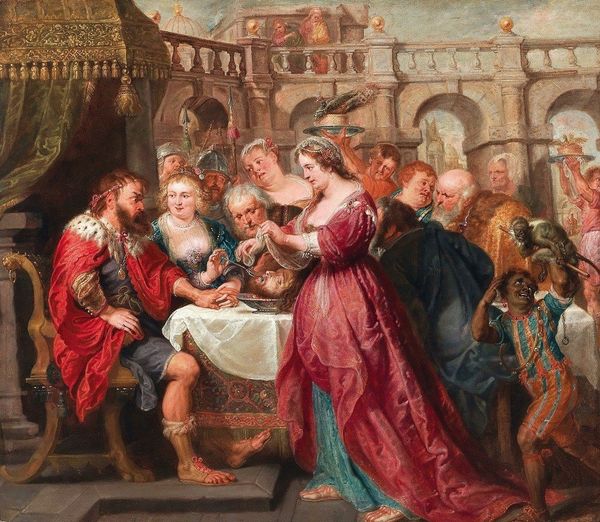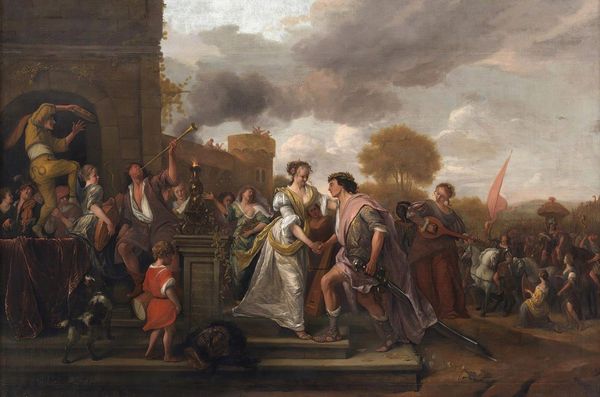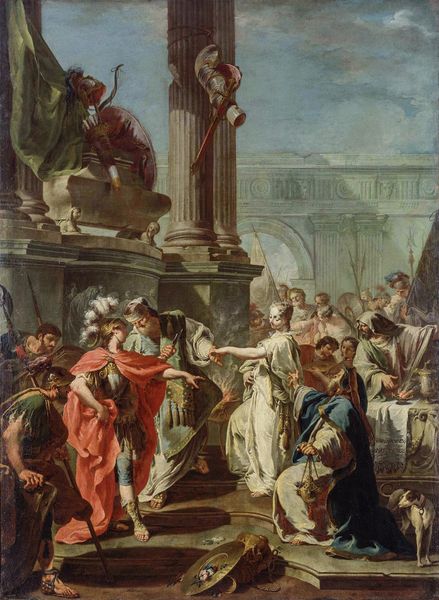
painting, oil-paint
#
figurative
#
allegory
#
narrative-art
#
baroque
#
painting
#
oil-paint
#
figuration
#
oil painting
#
history-painting
Copyright: Public Domain: Artvee
Curator: The Continence of Scipio, painted around 1706 by Sebastiano Ricci. It's oil on canvas, and it's striking, especially the subject's vulnerability in such a grand historical scene. What's your take? Editor: I am drawn to how the figures almost seem staged, as if caught in a fleeting, theatrical tableau. It certainly fits in with the drama often associated with the Baroque period. How do you interpret this work, particularly regarding its portrayal of power and gender? Curator: Absolutely, and let's delve into that staged aspect. What's being performed here? Ricci presents Scipio, a Roman general, showcasing restraint and virtue by returning a captured woman to her fiancé and refusing a ransom. This wasn't simply about historical accuracy, but about communicating very specific political and moral messages during the Enlightenment. Notice the submissive pose of the woman; How does that staging resonate with you considering contemporary perspectives on women’s agency? Editor: It strikes me as somewhat problematic. It appears her worth is derived from the men in her life – either her fiancé or her captor, Scipio – with little consideration for her own desires. She’s presented as an object to be bartered or given away, really highlighting the power dynamics at play. Curator: Precisely. The "continence," or self-restraint, attributed to Scipio, serves to glorify Roman virtue. But when viewed critically through a feminist lens, this scene unveils the construction of idealized masculinity and femininity and how women are rendered silent, passive symbols. Think of the role of colonial narratives back then too. How is this narrative being utilized to legitimize forms of dominance? Editor: That's insightful. So it’s not just a historical painting but a reflection of societal power structures, carefully constructed and promoted. Thanks for the analysis, I definitely see this work from a completely new angle now. Curator: And I'm grateful for your willingness to explore this perspective together. By interrogating these historical depictions, we gain a deeper understanding of both the past and our present.
Comments
No comments
Be the first to comment and join the conversation on the ultimate creative platform.
